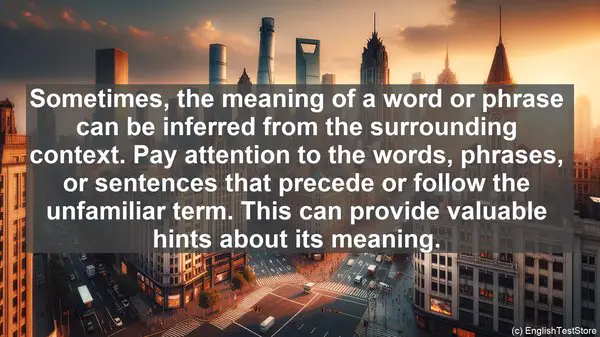Introduction: The Importance of Advanced Reading Comprehension
As you progress in your English language journey, the ability to comprehend advanced texts becomes crucial. It’s not just about understanding the words, but also grasping the underlying meaning, context, and nuances. In this video, we’ll explore 10 methods that can significantly enhance your reading comprehension skills at the B2 level.
1. Skimming and Scanning
Skimming involves quickly going through a text to get a general idea of its content. On the other hand, scanning is when you look for specific information or keywords. These techniques help you save time and identify relevant sections before diving deep into the details.
2. Contextual Clues
Sometimes, the meaning of a word or phrase can be inferred from the surrounding context. Pay attention to the words, phrases, or sentences that precede or follow the unfamiliar term. This can provide valuable hints about its meaning.
3. Active Reading
Reading actively involves engaging with the text rather than just passively going through it. Take notes, underline key points, or ask questions as you read. This not only helps with comprehension but also improves retention.
4. Predicting
Before you start reading a text, take a moment to make predictions about its content. This can be based on the title, headings, or any introductory information. As you read, check if your predictions were accurate. This strategy keeps you actively involved and gives you a purpose while reading.
5. Chunking
Instead of reading every word individually, try to group words together in meaningful chunks. This can be done based on punctuation marks, such as commas or colons. Chunking helps you process information more efficiently and understand the overall structure of a sentence or paragraph.

6. Summarizing
After reading a section or an entire text, practice summarizing the main points in your own words. This not only reinforces your understanding but also helps you identify the most important information. Aim for concise and accurate summaries.
7. Vocabulary Expansion
Building a strong vocabulary is essential for reading comprehension. Make it a habit to note down unfamiliar words while reading. Later, look up their meanings, usage, and synonyms. Gradually, you’ll have a wider range of words at your disposal, making it easier to understand diverse texts.
8. Multiple Readings
Sometimes, a single reading might not be enough to fully grasp a complex text. Consider going through it multiple times. With each reading, you’ll notice new details, connections, and insights. This iterative process can significantly improve your comprehension.
9. Content Familiarization
If you’re reading about a specific topic that’s unfamiliar to you, spend some time familiarizing yourself with the basics. This can be through online research, watching related videos, or reading simpler texts. Having some prior knowledge about the subject matter makes it easier to understand the nuances in the advanced text.
10. Practice, Practice, Practice
Ultimately, reading comprehension is a skill that improves with practice. Set aside dedicated time for reading every day. Start with texts that are slightly challenging but not overwhelming. As you progress, gradually increase the difficulty level. With consistent practice, you’ll see noticeable improvements in your comprehension abilities.

